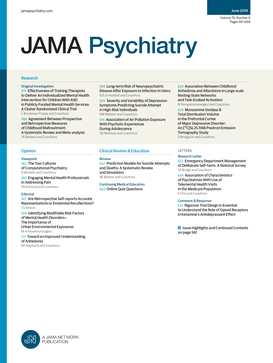
Web-based Self-Help Intervention Reduces Incidence of Depression in Persistent Back Pain Patients

Web-based Self-Help Intervention Reduces Incidence of Depression in Persistent Back Pain Patients
Effectiveness of a Guided Web-Based Self-help Intervention to Prevent Depression in Patients With Persistent Back Pain: The PROD-BP Randomized Clinical Trial.
JAMA Psychiatry. 2020 Oct 1;77(10):1001-1011.OE EXCLUSIVE
Synopsis
Two hundred and ninety-five patients with persistent back pain and subclinical depression were randomized to receive standard treatment for back pain plus a web-based self-help intervention for depression (eSano BackCare-DP) or standard back pain treatment alone for the prevention of major depressive episodes (MDEs). The primary outcome of interest was the onset of a MDE within the 12 month follow...
To view the full content, login to your account,
or start your 30-day FREE Trial today.
FREE TRIAL
LOGIN
Forgot Password?
Explore some of our unlocked ACE Reports below!

Learn about our AI Driven
High Impact Search Feature
Our AI driven High Impact metric calculates the impact an article will have by considering both the publishing journal and the content of the article itself. Built using the latest advances in natural language processing, OE High Impact predicts an article’s future number of citations better than impact factor alone.
Continue



 LOGIN
LOGIN

Join the Conversation
Please Login or Join to leave comments.